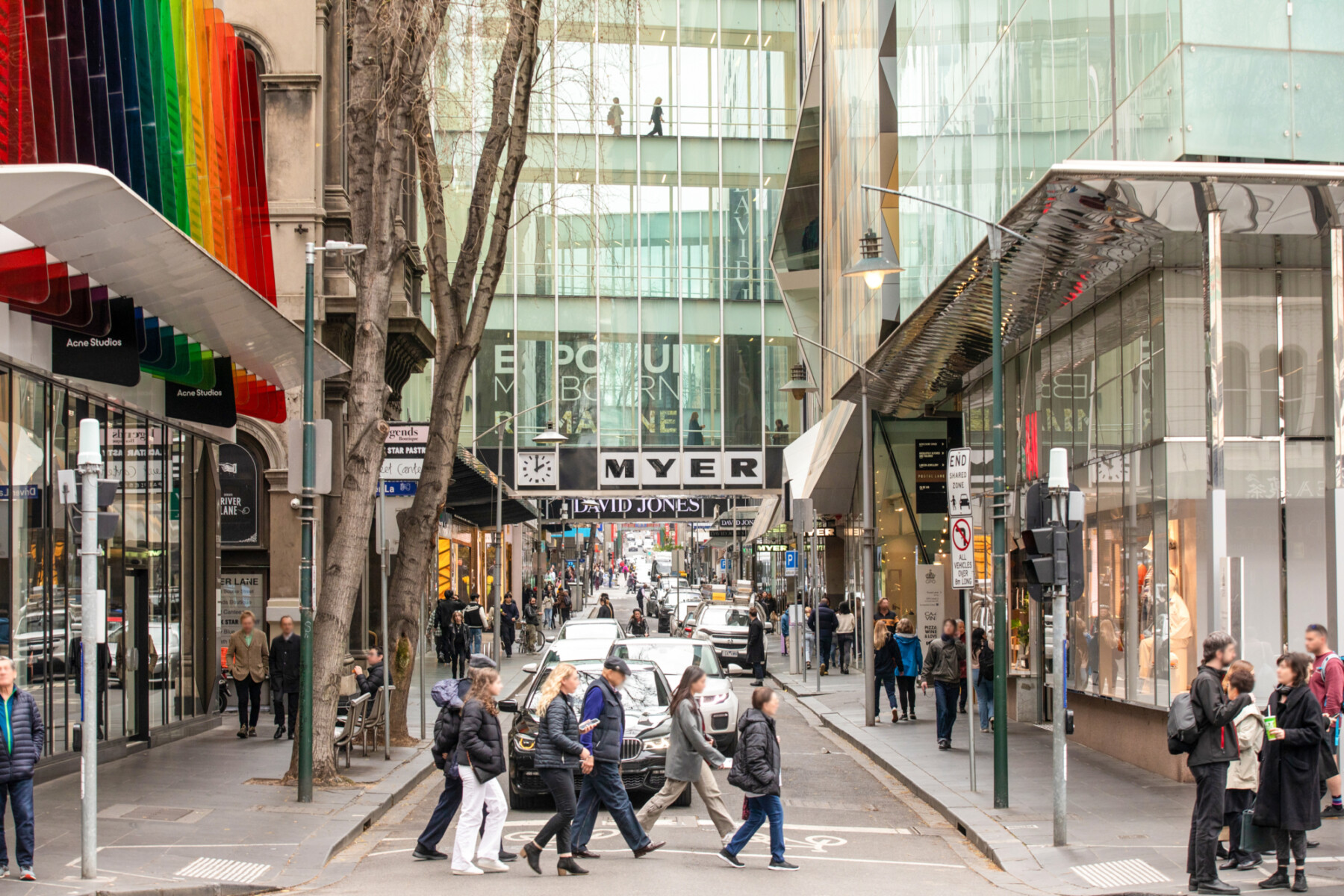
Melbourne CBD Retail Rebound Continues
A booming night-time economy, world-famous roll call of events, the return to the office and the upcoming completion of the Metro Tunnel are all fueling Melbourne’s CBD retail rebound, which has seen vacancies come down for yet another year as the city experiences a generational period of change.
According to Fitzroys’ latest edition of Walk the CBD – the industry standard report for retail vacancies and tenancy mixes within Melbourne CBD’s precincts – vacancies have come down over the past 12 months from 8.0% to 6.1%, and have been slashed by more than half since recording 14.1% 2 years ago.
Hospitality, food and beverage and entertainment operators again drove the take-up of space over the past 12 months, with the proportion of these spaces increasing from 40.9% to 47.4% - and up further from the 34.1% at the beginning of 2023.
“At various points during and in the fall-out of the pandemic there was consternation as to what the role of the CBD might be going forward,” said Fitzroys Division Director – Agency, James Lockwood.
“Melbourne’s CBD is showing that it has a vital role to play as the cultural and financial heartbeat of Australia’s largest and fastest-growing city.”
Fitzroys’ 2025 Walk the CBD report also found:
- Retailers and operators are taking up space in anticipation of the completion of major projects, including of the Metro Tunnel in the coming year, as well as the ongoing return to the office.
- Swanston Street is now home to the lowest vacancy in the CBD, at just 2.6%, as tenants scramble to find a foothold around the entrances of the brand-new Town Hall and State Library Metro Tunnel stations.
- The CBD is heading further towards a night-time economy.
- The high number of international students continues to make its mark on the city.
With a surging proportion of retail shopfronts being for hospitality, food and beverage and entertainment, the proportion of retail space occupied by service retail eased to 14.6%, and by specialty retail to 29.7%. The count takes in all street-facing shops, including those within arcades and shopping centres.
Active development sites as a proportion of retail sites remained elevated at 2.3%.
“The post-pandemic period has been one of generational change for the Melbourne CBD. It’s reflected in the vacancy and tenancy mix data, in the shift to a night-time economy, and in the buzz of the city,” Lockwood said.
“Data during the year showed foot traffic in the city was up by 35% after 6pm, and we’ve anecdotally seen a continuation of this trend.
“The recession of the 1990s was followed by innovation across the CBD, and we’re now seeing a similar pattern of new hospitality venues opening, laneways being activated and inner-city living taking off again.
“The CBD is again truly a cultural and financial centre.
“As well as being Melbourne’s financial hub, people are going to the CBD to eat and drink, to socialise, and for major events - sports, concerts and exhibitions.
“One of the CBD’s advantages is that Melbourne’s events are held in or on the edge of the CBD – at the MCG and the sports precinct, Federation Square, Marvel Stadium, the Arts Centre and NGV – so people spend time in the CBD to socialise and eat and drink before and after,” Lockwood said.
“We’ve seen that to full effect in that past year all the way through from Taylor Swift to the Grand Prix, over the course of the AFL season and AFL Grand Final between Brisbane and Sydney, Melbourne Spring Carnival, Boxing Day test featuring Australia and India, Coldplay and Robbie Williams concerts, and the Australian Open.”
The events are also major tourism drawcards, adding more buzz and activity to the CBD. STR Travel data showed that Melbourne’s hotels were at 93% occupancy at the midway point of the Australian Open.
“Instagram-friendly events such as the NGV’s Yayoi Kusama world premiere exhibition are also bringing yet more people into the CBD,” Lockwood added.
Lockwood said, “What we’re seeing on the ground is that the momentum driven by the night- time economy and these major events is now being carried over into anticipation of the ongoing return of workers to the office.
“We’re seeing the government and more companies, such as Tabcorp, Amazon, Coles and Woolworths, mandating a return to the office – ranging from three days a week or up to five. Retailers are taking note.”
Hand-in-hand with Melbourne being an events capital is its world-class offering of bars, restaurants, cafés and entertainment venues.
“We’re seeing a shift to a twilight economy,” Lockwood said. Melbourne City Council data showed shoppers were spending 19% more after hours in 2024 compared to a year earlier, and a 34% increase in after-work retail spending compared to pre-pandemic 2019.
Meanwhile, pedestrian activity around Melbourne Central is higher between 5pm and 10pm than before 12pm.
“On the back of working-from-home arrangements in recent years Thursday became the new Friday, and we continue to see elevated visitation rates to the CBD on Thursday night, Friday nights and across the weekend.
“Some operators are opening later and closing later. We’re becoming a 24-hour city.”
Meanwhile, the growing local population and more people coming into the city to dine at BYO restaurants has driven two new key deals. Gikas and Lockwood have leased 1/360 Bourke Street to Bottlestop, while 62 Elizabeth Street has been leased to Endeavour Group- owned BWS. Both deals are moving through the permit phase.